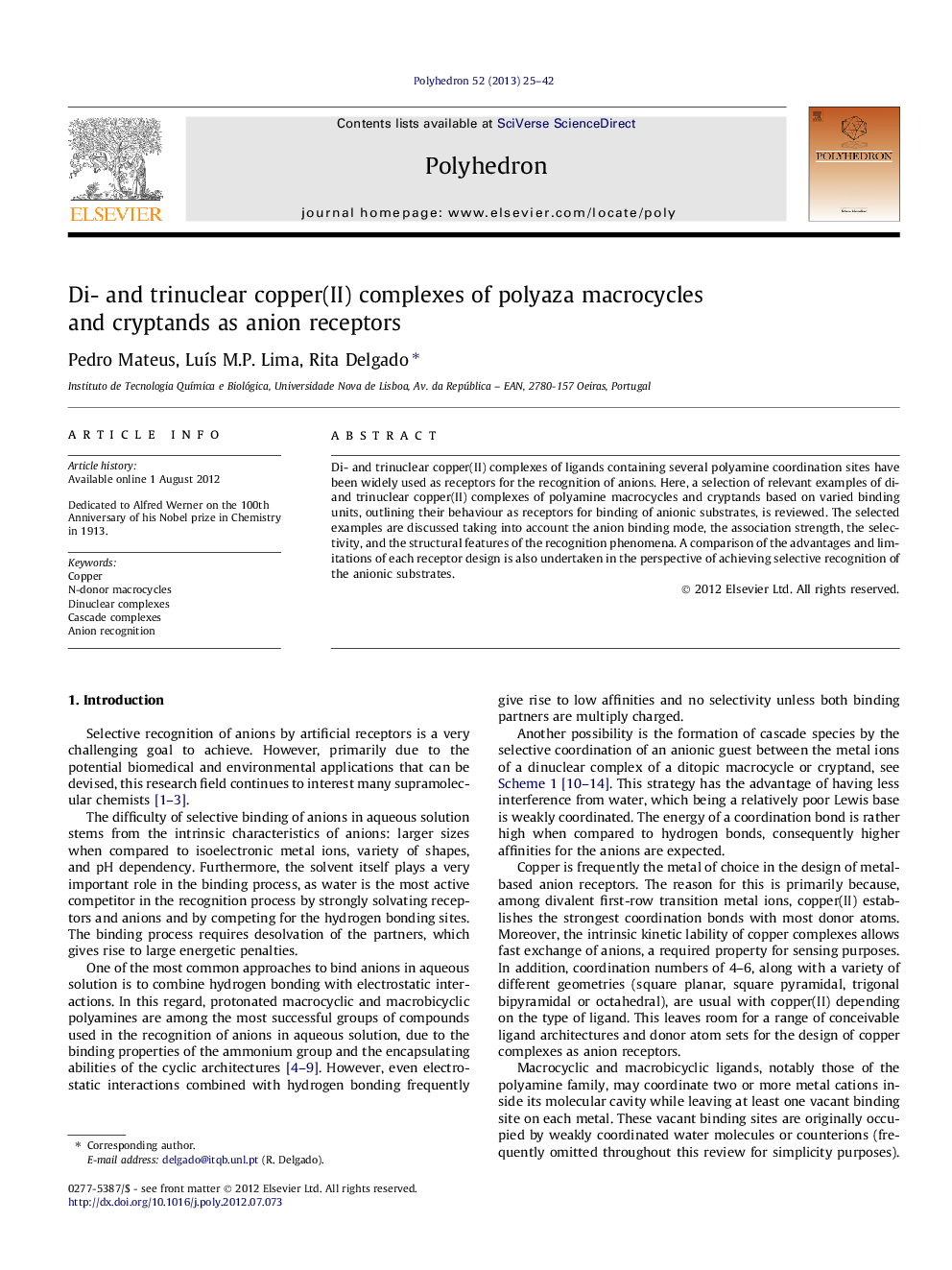| Article ID | Journal | Published Year | Pages | File Type |
|---|---|---|---|---|
| 1336919 | Polyhedron | 2013 | 18 Pages |
Di- and trinuclear copper(II) complexes of ligands containing several polyamine coordination sites have been widely used as receptors for the recognition of anions. Here, a selection of relevant examples of di- and trinuclear copper(II) complexes of polyamine macrocycles and cryptands based on varied binding units, outlining their behaviour as receptors for binding of anionic substrates, is reviewed. The selected examples are discussed taking into account the anion binding mode, the association strength, the selectivity, and the structural features of the recognition phenomena. A comparison of the advantages and limitations of each receptor design is also undertaken in the perspective of achieving selective recognition of the anionic substrates.
Graphical abstractDi- and trinuclear copper(II) complexes of the polyamine macrocycles and cryptands based on varied binding units are reviewed as receptors for binding of anionic substrates. The selected examples are analyzed taking into account the anion binding mode, the association strength, the selectivity and the structural features of the recognition phenomena.Figure optionsDownload full-size imageDownload as PowerPoint slideHighlights► Polyamine macrocycles and cryptands based on varied binding units are discussed. ► Di- and trinuclear copper(II) complexes of the polyamines as receptors for binding of anionic substrates are reviewed. ► Examples are analyzed taking into account the binding mode, association strength, selectivity and structural features. ► A comparison of the advantages and limitations of each receptor design for achieving selective recognition is undertaken.
